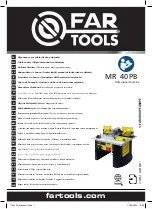
1-14
Cisco MGX 8850 (PXM1E/PXM45), Cisco MGX 8950, Cisco MGX 8830, and Cisco MGX 8880 Configuration Guide
Release 5.0.10, OL-3845-01 Rev. B0, August 16, 2004
Chapter 1 Preparing for Configuration
Collecting Information
Collecting Information
During configuration, you will need to enter general configuration data that describes the switch, enables
administrator access, and enables switch participation in the network. This data includes
•
•
•
•
•
•
•
Guidelines for Creating a Network Clock Source Plan
•
•
Physical Location of Cards and Lines in the Switch
The following sections describe these topics in more detail.
Appendix E, “Hardware Survey and
Software Configuration Worksheets,”
provides tables that you can use to record the data you develop
during configuration planning.
Unique Switch Name
Each switch must have its own name (which consists of up to 32 characters), unique within the ATM
network. If you are adding a switch to a network, find out if the network administrator has established
switch naming conventions, and find out which names have already been used. It is a good practice to
name switches according to location, as such names convey both the switch identity and its location. The
procedure for setting the name is described in the “
Setting and Viewing the Node Name
” section in
Chapter 2, “Configuring General Switch Features.”
IP Addressing Plan
An IP network addressing plan is required for switch management. IP network addressing is described
in the “
Guidelines for Creating an IP Address Plan
” section later in this chapter.
ATM Addressing Plan
An ATM network addressing plan is critical for successful operation of MGX switches in an ATM
network. PNNI networks require unique ATM addresses on each switch. However, the PNNI protocol
uses structured network addresses to logically group network devices and determine routes between
devices. For PNNI networks, an ATM address plan is required.
PNNI network addressing is described in the Cisco PNNI Network Planning Guide for MGX and SES
Products.
















































